Key takeaways:
- GraphQL’s strong type system and single endpoint streamline API architecture, improving data retrieval and reducing bugs.
- Flexibility in querying and self-documenting features enhance performance and ease onboarding for developers.
- Key challenges include managing schema versioning, error handling, and optimizing queries to improve performance.
- Thorough schema design and documentation, along with community support, are critical for successful GraphQL implementation.
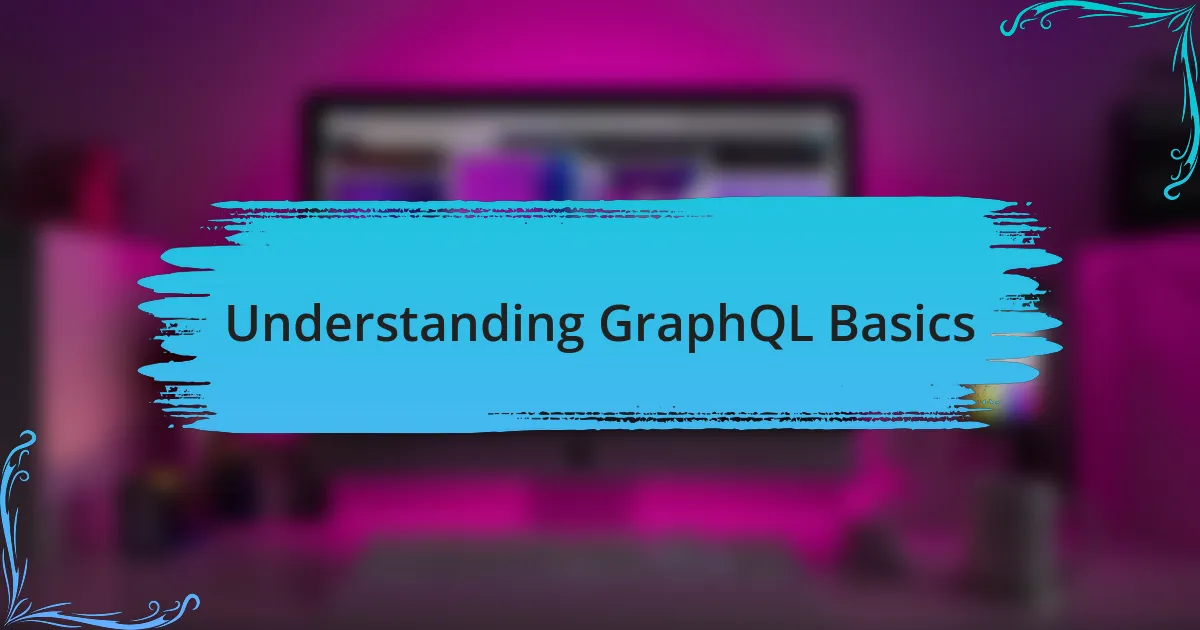
Understanding GraphQL Basics
GraphQL is a powerful query language for APIs that allows clients to request exactly the data they need. I remember the first time I delved into GraphQL; it felt like switching from a bicycle to a sports car. Suddenly, instead of sifting through unwieldy responses with excessive data, I could fine-tune my queries to fetch just the relevant information.
What impresses me about GraphQL is its strong type system. Each query is validated against a schema, ensuring that I won’t face surprises at runtime. This dramatically reduced the number of bugs in my projects. Have you ever found yourself lost debugging ambiguous responses from traditional REST APIs? That clarity in data retrieval made my life much easier and my applications more robust.
Moreover, GraphQL operates on a single endpoint, allowing for more efficient data fetching. Initially, I wondered how this could simplify my API architecture. But over time, I found this approach streamlined development and enhanced performance. It’s like having a personal assistant who understands exactly what you want every time you ask; it just makes everything smoother and more intuitive.

Benefits of Using GraphQL
One of the standout benefits of using GraphQL is its flexibility in querying data. I recall sitting in front of my laptop, tweaking queries until they fit my exact needs. The ability to request only what I wanted felt liberating—no more excess baggage of unwanted data, which often bogged down performance. It’s like having a customizable menu at a restaurant where you can mix and match ingredients to create your perfect dish.
Another major advantage is the reduction in the number of API requests. In my experience, multiple endpoints in REST could feel like a maze. With GraphQL, however, I was able to consolidate my data-fetching process into a single query. I remember a project where this drastically improved load times and kept users engaged, as they didn’t have to wait for multiple round-trips to the server. Have you noticed how imperative speed is in your applications? That efficiency transformed my user experience and elevated my projects to the next level.
Lastly, the self-documenting nature of GraphQL deserves a mention. When I introduced it to my team, I saw their initial hesitation transform into excitement as they discovered the built-in schema that clearly outlined the available data. I believe this feature simplifies onboarding for new developers, making it easier for them to connect with the codebase faster than ever. Who wouldn’t appreciate a tool that almost teaches itself?
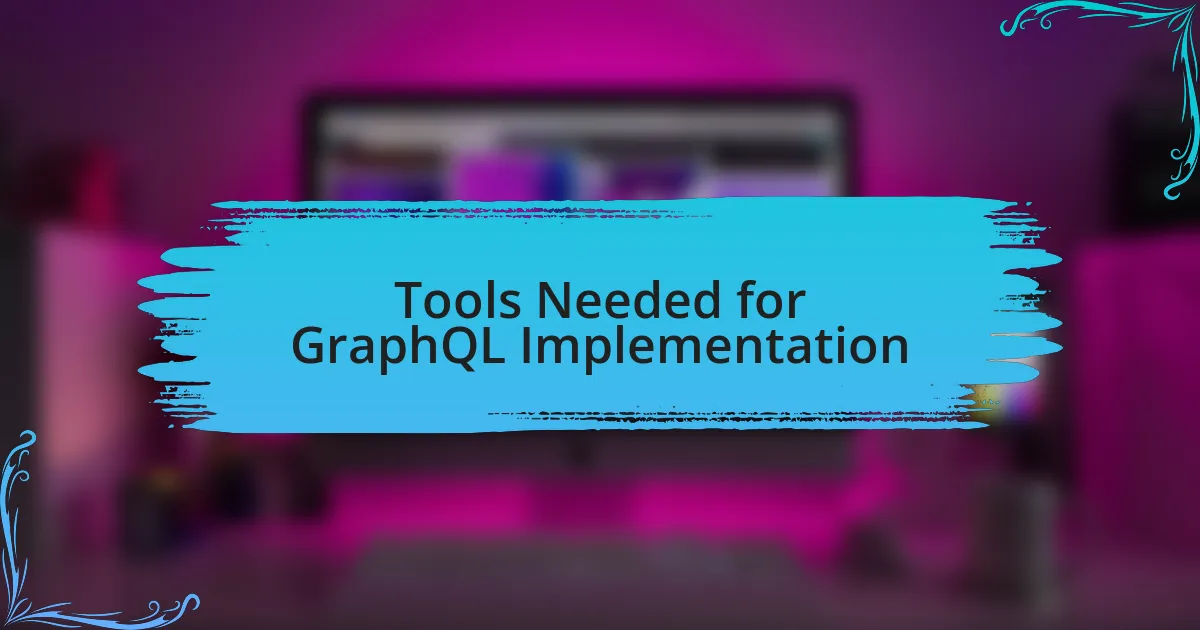
Tools Needed for GraphQL Implementation
When diving into GraphQL implementation, having the right tools can significantly streamline your experience. I found that using Postman for testing my GraphQL queries was a game-changer. It provided an intuitive interface for crafting requests and instantly seeing the responses, which made debugging so much simpler. Have you ever felt frustrated by complicated setup processes? Postman’s user-friendly design made that frustration a thing of the past for me.
Another essential tool that stood out during my projects is Apollo Client. This powerful library helped manage my data-fetching needs seamlessly. I remember the relief I felt when I realized I could cache responses, reducing the load on my server and enhancing the performance of my application. The ease with which Apollo integrates with React and my other frameworks was like finding the perfect partner for a dance—everything just clicked.
Lastly, I can’t overlook the importance of a solid development environment, like Visual Studio Code. It offers extensions specifically for GraphQL that provide syntax highlighting and linting, improving my coding efficiency. While coding, I often got lost in the details, but these tools guided me through, almost like having a digital co-pilot. Have you ever wished for clarity while navigating complex code? This setup made my GraphQL journey smoother, ensuring that I could focus on creativity rather than confusion.
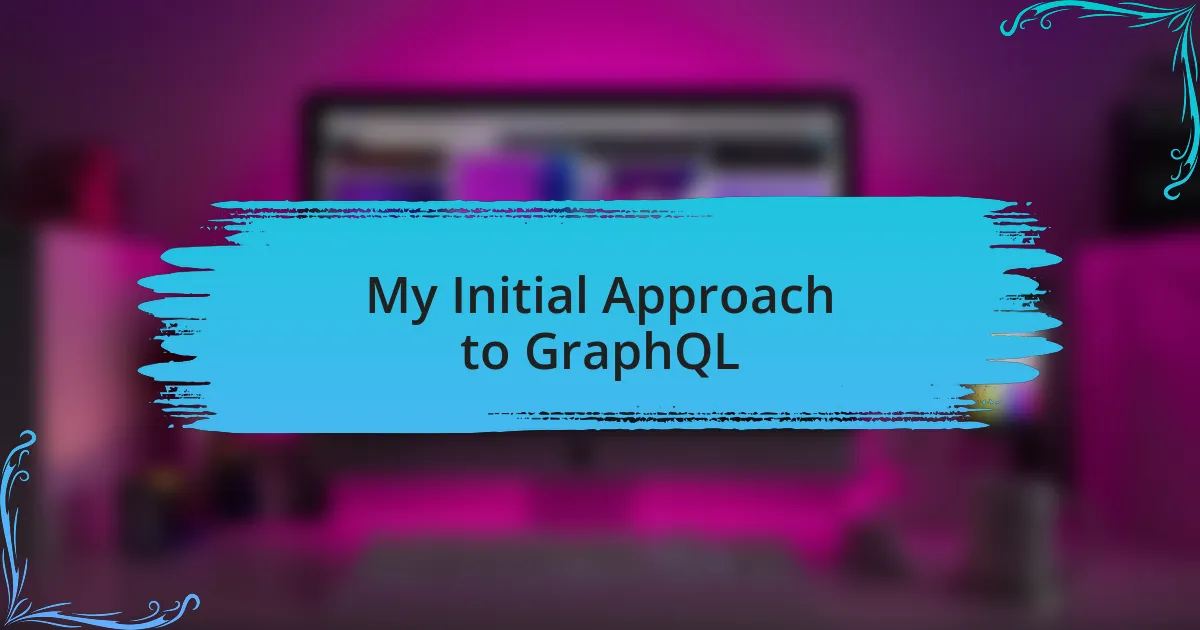
My Initial Approach to GraphQL
When I first approached GraphQL, I was both excited and a bit apprehensive. The concept of querying data more efficiently was tantalizing, but the learning curve seemed steep. I remember spending hours going down the rabbit hole of documentation, trying to grasp the difference between queries, mutations, and subscriptions. Does that ever happen to you? That moment when you realize that what looks straightforward can be quite intricate?
As I began building my initial schema, I felt a mix of determination and uncertainty. Crafting types and relationships felt daunting at first, particularly when trying to visualize how everything would connect. The first time I successfully set up a simple query that returned meaningful data, I couldn’t help but smile—almost like completing a puzzle. Have you ever fought through a challenge, only to feel that rush of achievement when you finally get it right?
I chose to start small, focusing on a single feature for my application, which turned out to be a wise decision. It provided me with the space to experiment and adapt without feeling overwhelmed. This process reminded me of cooking; you wouldn’t start with a five-course meal without mastering the basics first. The satisfaction of seeing my GraphQL endpoint respond correctly was a turning point, reinforcing my belief that this technology could genuinely enhance user experiences.
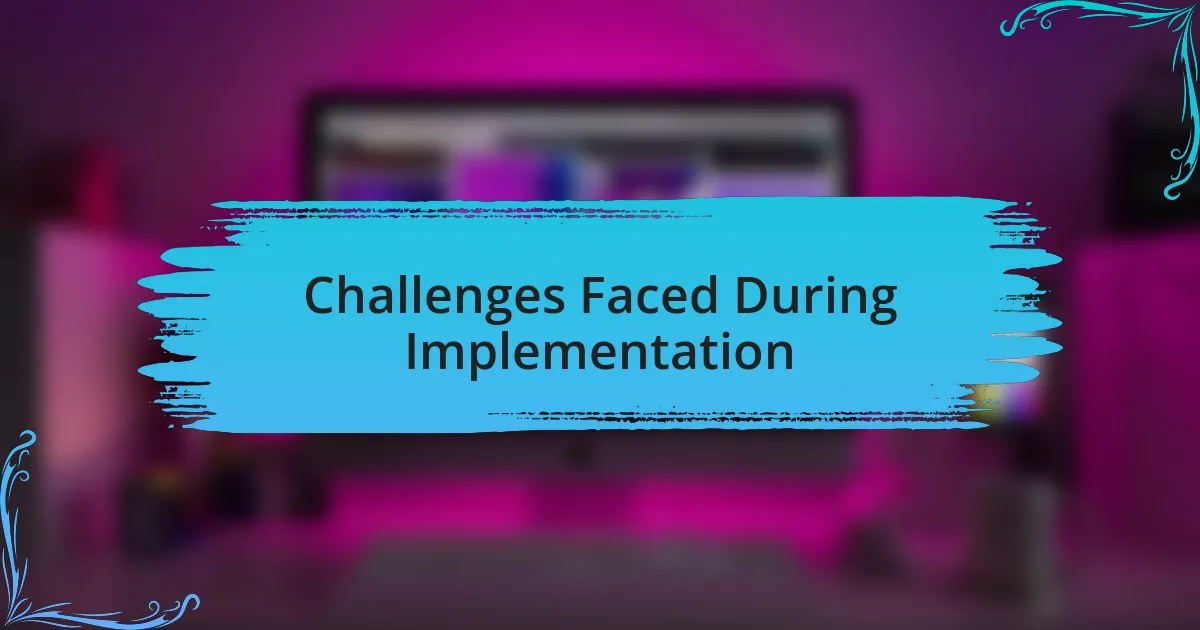
Challenges Faced During Implementation
Implementing GraphQL brought its fair share of hurdles that I hadn’t anticipated. One of the biggest challenges I faced was managing versioning. Unlike traditional REST APIs, where you can easily create new endpoints for changes, with GraphQL, I found myself needing to be more thoughtful about how changes might affect existing queries. Did I really consider the long-term impact of my schema design? At times, I felt overwhelmed, constantly second-guessing whether I’d locked myself into a pattern that could become cumbersome down the road.
Another significant obstacle was error handling. I recall an incident where my initial implementation didn’t provide clear feedback for errors in queries. It was frustrating to receive vague messages when things went wrong, making debugging a slow and painful process. I learned quickly that the intricacies of GraphQL demand a well-planned error structure; without it, developers can end up feeling like they’re navigating a maze without a map. Have you ever been stuck trying to figure out what went wrong, only to realize you missed a crucial step along the way?
Despite my determination to get everything right, the performance can sometimes be tricky. I remember running into issues where complex queries pulled more data than necessary, leading to slow response times. It was a tough lesson in optimizing queries, but understanding the importance of specifying what you need became a game changer for me. I realized that being specific was not just a nice-to-have; it was essential for ensuring smooth and efficient interactions within my application.
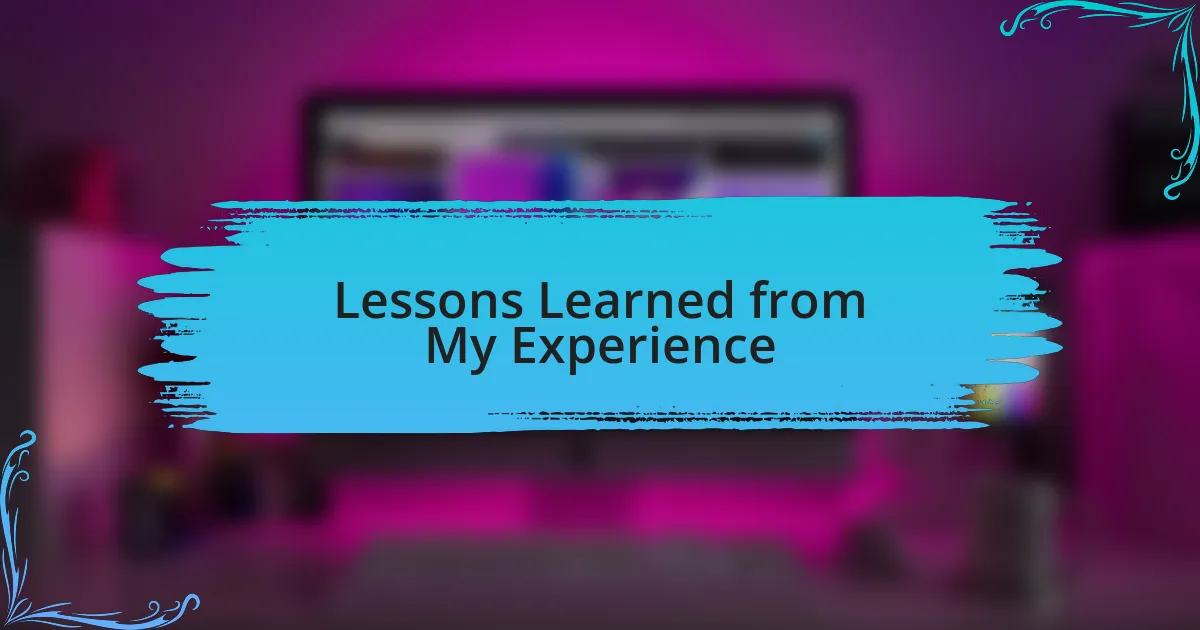
Lessons Learned from My Experience
One of the most profound lessons I learned was the importance of schema design. I distinctly remember my initial attempts at crafting a schema that was too broad, leading to a chaotic mess of queries that confused not only me but also my team. Have you ever invested time in something only to realize you need a complete rethink? That moment of clarity taught me that a well-structured schema is the backbone of any successful GraphQL implementation.
Another key takeaway was the value of documentation. I had underestimated how crucial it was to maintain thorough documentation for my GraphQL API. When I walked away from the project for a few days, I was met with a wall of confusion upon my return. It felt disheartening to dig through code without clear references. This experience hit home for me; good documentation is like a flashlight in a dark room, guiding both my future self and others navigating the complexities of the system.
Lastly, the community support surrounding GraphQL proved to be invaluable. Early on, I found myself stuck with a particularly convoluted query. It was in the online forums where I found the answer, along with stories from others who had faced similar dilemmas. I realized that tapping into a community can be a powerful tool. Have you ever felt isolated in your coding journey? That connection with others not only offered solutions but also fostered a sense of camaraderie that made the process all the more enjoyable.